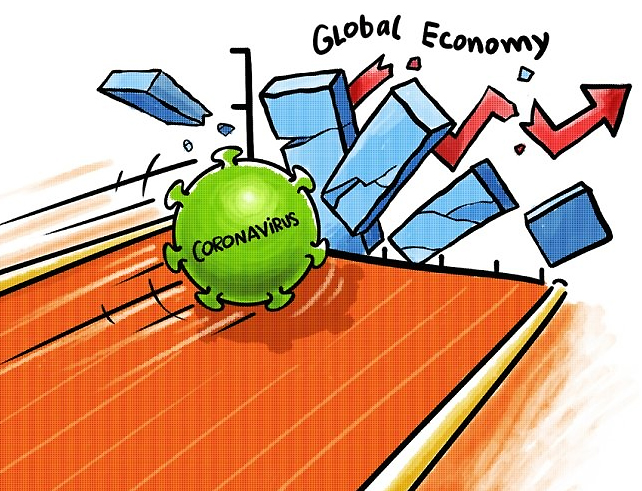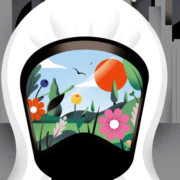Coronavirus and Hawaii; resiliency and sustainability are tested
Hawaii, a profile in crisis readiness
The coronavirus pandemic has highlighted how vulnerable our modern societies are, particularly in an isolated island state like Hawaii.
We import 99 percent of our transportation fuel from thousands of miles away.
We import about 90 percent of our food, and this amount is declining in recent years rather than increasing.
Almost all of our consumer, medical, and industrial goods are shipped or flown in, over thousands of miles.
We have only one or two hospitals in the state that can handle certain medical procedures.
Hawaii, as a state, is especially vulnerable to economic shocks, pandemics, as well as a number of the familiar natural disasters, such as hurricanes, tsunamis, droughts, volcanic activity, and earthquakes. And we haven’t even mentioned the exacerbating effects of climate change which are now apparent and will only worsen in the coming years.
We do, however, have feasible options for improving the current state of affairs.
A Focus on Hawaii Island
The Hawaii County Council environmental and agricultural management committee just two weeks ago voted unanimously to make a relatively small code change that could lead to a revival of the mayor’s Sustainability Action Committee.
Mayor Kim created the committee back in 2007, during his previous term, but never actually stood it up as a working committee. Thirteen years later, and well past time to stand up this committee, it may finally see the light of day. County added new code language to its Bill 142, adding the words “climate change” to the list of topics within the purview of the Sustainability Action Committee. This important two-word addition will allow Mayor Kim to finally stand up this important committee and to address sustainability issues explicitly linked to climate change and resiliency challenges.
The Big Island could, in theory, provide almost all of its peoples’ needs with local resources. But being resilient isn’t about manufacturing cell phones or big screen TVs locally — that’s not required or reasonable. Being resilient is more about being able to survive even the worst disasters by having, at the very least, water, food, shelter, medical supplies, energy, and communication needs on hand so that we can, together, weather what storms may come our way.
How long could Hawaii last under our current lifestyle if we were cut off from outside food, oil, medical supplies, and manufactured goods?
The sad answer is that we’d last less than a week before major societal and economic impacts begin to take hold.
The current coronavirus pandemic has shown us that these kinds of scenarios aren’t impossible. These are the scenarios that we do need to plan for. We need to be resilient and ready for whatever disasters come our way. This means a number of important things:
- Reducing our dependency on imports, e.g., shifting rapidly to local agriculture, renewable energy like solar, wind and geothermal, beefing up water supplies, and shifting away from gasoline and diesel vehicles to zero emissions ground transportation alternatives, like electric vehicles.
- Future-proofing our infrastructure and housing, e.g., planning for possible future migration from areas that will be inundated by rising sea levels.
- Creating a culture of readiness through awareness and practice.
Hawaii Island already has a good start with various efforts like the Transportation Hui, coordinated by Riley Saito, the county’s Research and Development Department energy programs lead, which recently completed its shared mobility plan working with the Shared-Use Mobility Center. We also have the County’s greenhouse gas tracking efforts, which recently completed a county-wide inventory of emissions, building on similar state efforts.
Combined with existing disaster preparedness plans led by the County’s Civil Defense Agency, and various efforts to promote local agriculture, there is much work that can be built upon in order to truly prepare our island to be resilient and sustainable.
Transforming our local economies will take smart planning and sustained community dialogue, so that all parts of our communities are on board and understand why these shifts need to take place. Sustainability and resiliency are two sides of the same coin.
By being more sustainable we become more resilient.
Mayor Kim, please, as soon as possible, stand up the Sustainability Action Committee and let it get to work creating sustainability and resiliency plans for the Big Island, working with stakeholders every step of the way.
Tam Hunt is a lawyer and writer based in Hilo, Hawaii, and guess editor to BeyondKona. Noel Morin is a contributor editor to BeyondKona. With over 27 years of experience in business systems analysis, product management, and leadership roles in companies like Johnson and Johnson and eBay, Noel is also an environmental advocate with a focus on Hawaii’s future, while advancing the state’s electrification of transportation through his role as president of the Hawaii EV Association.




Leave a Reply
Join the Community discussion now - your email address will not be published, remains secure and confidential. Mahalo.